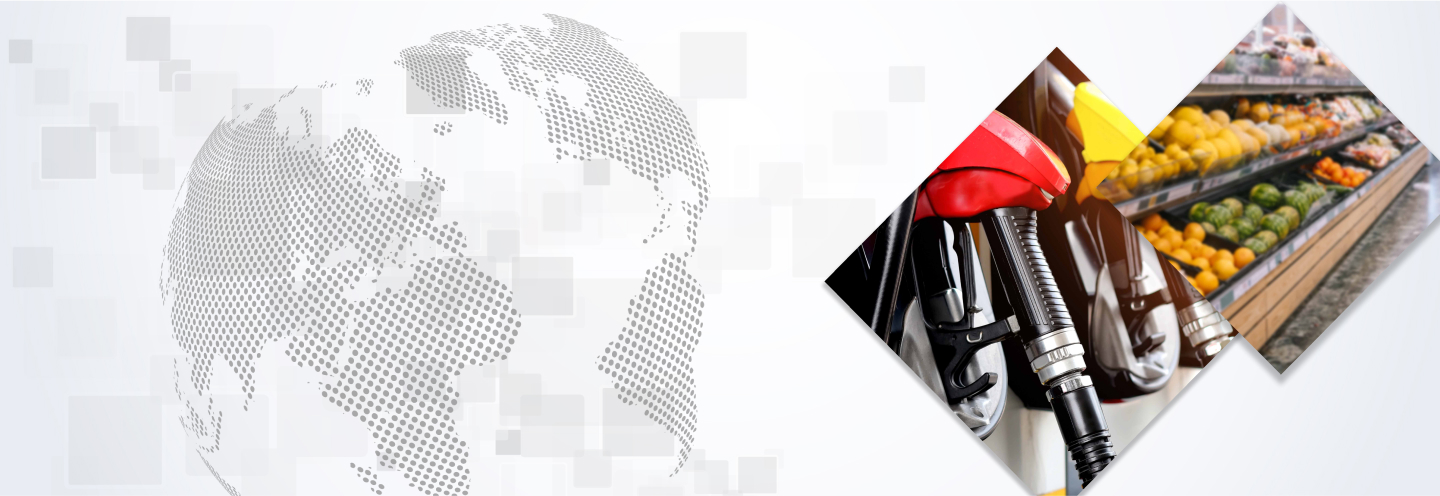
Key takeaways
- As a result of robust global oil demand and tight supply, we could be entering the next wave of the energy supercycle.
- Supply sources outside of OPEC are reaching their limits, leaving the alliance to meet rising demand and deplete its spare capacity. Diminishing spare capacity introduces an additional risk premium of around $20-30/bbl.
- A recent example of this risk premium is the Israel-Hamas conflict, which saw oil prices rise 7% within a week despite no immediate threats to supply.
- At the same time, higher-for-longer interest rates are raising the cost of debt and equity, causing companies to return structurally more cash to shareholders and increasing corporate breakevens. This is translating into a higher marginal cost of oil, pushing the back end of the price curve to $80/bbl and above.
- Against a backdrop of rising oil prices, J.P. Morgan Research believes energy stocks should outperform the broader equities market as the sector acts as a macro hedge against rising inflation, interest rates and geopolitical risks.
Oil prices have recently been on an upward march, with Brent crude — the benchmark for global oil markets — topping a 10-month high of $97/bbl in September 2023. This rally follows production cuts by Saudi Arabia and Russia, as well as increased demand for gasoline and jet fuel stemming from China’s reopening.
Looking ahead, prices may remain elevated for some time — a far cry from the oil price collapse of 2020, when Brent hit a low of $25.57. This is especially as supply-demand fundamentals will likely remain tight against a backdrop of tectonic geopolitical shifts. Could we be entering a new wave of the energy supercycle, and will oil prices continue to rise?
“We are turning bullish now as we envisage an emerging supply-demand gap beyond 2025, coupled with strengthening bottom-up sector fundamentals.”
Christyan Malek
Global Head of Energy Strategy and Head of EMEA Oil & Gas Equity Research, J.P. Morgan
What is an energy supercycle?
An energy supercycle can be defined as a sustained increase in energy prices. This is usually driven by structural changes and can, in some cases, last for decades.
Will oil prices continue to rise?
In short, most probably. “We are turning bullish now as we envisage an emerging supply-demand gap beyond 2025, coupled with strengthening bottom-up sector fundamentals,” said Christyan Malek, Global Head of Energy Strategy and Head of EMEA Oil & Gas Equity Research at J.P. Morgan.
In the U.S., the Strategic Petroleum Reserve (SPR) is currently around 40% below the long-term average level of 600 mn barrels. Commercial crude inventories are similarly below historical averages, standing at 418 mn barrels as of September 15. Going forward, U.S. production is expected to be limited as higher-for-longer interest rates dampen the flow of capital into new supply, shale productivity peaks and operators prioritize shareholder returns over growth.
In the same vein, most of the supply sources elsewhere around the globe are being depleted as fields’ production levels naturally decline and new investments remain limited. While the Organization of the Petroleum Exporting Countries (OPEC) is ramping up production to meet rising demand and accordingly depletes its spare capacity, this introduces an additional risk premium of around $20-30/bbl, which usually leads to increased oil price volatility.
Geopolitical unrest could further elevate oil prices, which recently spiked 7% following the Israel-Hamas conflict. “While there are no immediate threats to oil supply, the conflict is a wake-up call about the lack of spare capacity,” Malek noted. “We believe this is an example of an emerging risk premium related to diminishing spare oil production capacity, and we expect short-term spikes to continue over the medium term while becoming more sustained.”
Demand, on the other hand, is rising. J.P. Morgan Research forecasts that world oil demand will reach 106.9 mbd by 2030 — an increase of 5.5 mbd from 2023 levels. This is underpinned by population growth and rising energy consumption in developing nations, outweighing the energy efficiency measures being undertaken in developed economies.
Rising energy demand places greater pressure on traditional fuels to fill the gap. This is because the clean energy system is not yet mature enough to capture and distribute the significant increase in the generation of clean joules due to supply chain, infrastructure, and key materials bottlenecks. “Generating and distributing the joules necessary to meet global energy demand growth and progressively decarbonize is a multi-decade process,” Malek added.
Overall, J.P. Morgan Research estimates that global oil markets could face a 1.1 mbd deficit in 2025, widening to 7.1 mbd in 2030. Consequently, oil prices could spike to $150/bbl over the near to medium term and $100/bbl over the long term — above J.P. Morgan Research’s $80/bbl long-term forecast. “We believe the global economy is able to withstand triple-digit nominal oil prices, as in real terms such prices remain below the peak levels seen in 2008 and 2011 and are also below the demand destruction zone,” Malek said.
The gap between global oil supply and demand
What is the outlook for energy stocks?
Energy equities have underperformed oil prices in recent months. While Brent is up 30% since June, equities have only risen 11-13%. However, the outlook for energy stocks now appears brighter due to a more positive macro outlook, upside risks to earnings per share and attractive valuations relative to the market.
While there are downside risks linked to a global recession and disappointing economic performance from China, energy stocks should outperform the broader equities market as supply-demand fundamentals remain tight, according to Malek and Marko Kolanovic, Chief Global Markets Strategist at J.P. Morgan. And in the event that OPEC ups production in the next 12 months, such a move has historically been supportive for energy equities.
Even as equity valuations face risks from higher-for-longer interest rates, energy stocks tend to be well-positioned, especially as the sector acts as a macro hedge against rising inflation, interest rates and geopolitical risks. In light of these factors, J.P. Morgan Research is turning bullish once again on the global energy complex.
Related insights
-

Global Research
Why are gasoline and food prices rising?
May 13, 2022
Gas prices at the pump have hit record highs for U.S. drivers and the cost of groceries is surging as inflationary pressures mount and the conflict in Ukraine persists. J.P. Morgan Research examines the outlook for consumer prices as the crisis in the region threatens commodity supplies.
This communication is provided for information purposes only. Please read J.P. Morgan research reports related to its contents for more information, including important disclosures. JPMorgan Chase & Co. or its affiliates and/or subsidiaries (collectively, J.P. Morgan) normally make a market and trade as principal in securities, other financial products and other asset classes that may be discussed in this communication. This communication has been prepared based upon information, including market prices, data and other information, from sources believed to be reliable, but J.P. Morgan does not warrant its completeness or accuracy except with respect to any disclosures relative to J.P. Morgan and/or its affiliates and an analyst's involvement with any company (or security, other financial product or other asset class) that may be the subject of this communication. Any opinions and estimates constitute our judgment as of the date of this material and are subject to change without notice. Past performance is not indicative of future results. This communication is not intended as an offer or solicitation for the purchase or sale of any financial instrument. J.P. Morgan Research does not provide individually tailored investment advice. Any opinions and recommendations herein do not take into account individual client circumstances, objectives, or needs and are not intended as recommendations of particular securities, financial instruments or strategies to particular clients. You must make your own independent decisions regarding any securities, financial instruments or strategies mentioned or related to the information herein. Periodic updates may be provided on companies, issuers or industries based on specific developments or announcements, market conditions or any other publicly available information. However, J.P. Morgan may be restricted from updating information contained in this communication for regulatory or other reasons. Clients should contact analysts and execute transactions through a J.P. Morgan subsidiary or affiliate in their home jurisdiction unless governing law permits otherwise. This communication may not be redistributed or retransmitted, in whole or in part, or in any form or manner, without the express written consent of J.P. Morgan. Any unauthorized use or disclosure is prohibited. Receipt and review of this information constitutes your agreement not to redistribute or retransmit the contents and information contained in this communication without first obtaining express permission from an authorized officer of J.P. Morgan.